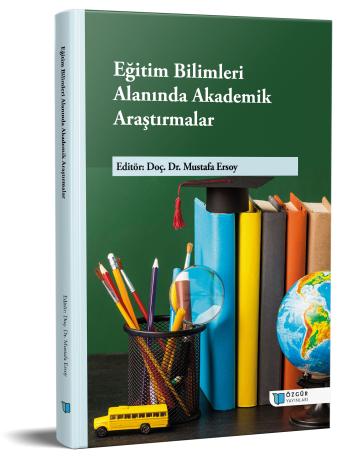
Academic Research in the Field of Education Sciences
Synopsis
The 21st century is reshaping education systems with an understanding that goes beyond the mere transfer of knowledge and focuses on the multidimensional development of the individual. Digitalization, global migration, environmental crises, and technological revolutions make it necessary to rethink education policies and practices. In this context, the book titled “Academic Research in the Field of Education Sciences” addresses the fundamental issues facing contemporary education from an interdisciplinary perspective and aims to make innovative contributions to educational research.
In the first chapter, Semra Tanrıöver's study titled “STEM SOS Model: An Integrated Approach to Project-Based and Research-Based Learning” introduces the STEM SOS approach, a holistic and structured model for imparting 21st-century skills. By integrating project-based and research-based learning methods, this model supports the development of critical skills such as scientific thinking, problem solving, collaboration, and communication among students, providing an important example for STEM applications in Turkey.
In the second section, Mine Aksoylar and her colleagues' research titled “Understanding the Migration Experiences of Foreign Students” examines the multi-layered problems faced by migrant and refugee students in the education system through an experience-based approach. By making visible the effects of pre-, during, and post-migration experiences on children's participation in education, this study offers important insights for the development of inclusive and sensitive education policies.
The third chapter, prepared by Ayşegül Tongal, is titled “Environmental Education and Zero Waste Context: Metacognitive Awareness, Reasoning, and TPKK Applications” and examines the integration of pedagogical, technological, and cognitive components in environmental education for a sustainable future. In this approach, where learning takes place in both formal and informal settings, increasing students' metacognitive awareness levels and reasoning skills is emphasized as a fundamental element in raising environmentally conscious individuals.
Finally, the chapter titled “Science Education in the 21st Century: Artificial Intelligence-Supported Learning, Innovative Teaching Technologies, Distance Education, and Hidden Teacher Theories,” also written by Ayşegül Tongal, discusses the effects of digital transformation in science education from multiple perspectives. It highlights the implicit effects of teachers' beliefs on learning, alongside the integration of innovative technologies such as artificial intelligence, augmented/virtual reality, metaverse, and robotics into educational processes.
This book serves as a current, practical, and theoretically rich reference source for both academics and teachers as well as education policymakers. It is hoped that it will contribute to all stakeholders seeking to develop an approach that can adapt to the changing dynamics of education.

